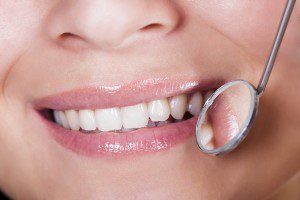 We’re all familiar with braces – metal fastened to teeth in our adolescent years to straighten our crooked permanent teeth. It was a source of ridicule that made growing up torture. But if you didn’t get braces as a kid, you now need to balance a desire for a corrected smile against the desire not to have visible metal braces. The American Association of Orthodontics indicates that approximately 25% of people wearing braces are adults, which means a lot of patients are currently being treated. But you don’t see them that often, so how? Clear braces known as Invisalign.
We’re all familiar with braces – metal fastened to teeth in our adolescent years to straighten our crooked permanent teeth. It was a source of ridicule that made growing up torture. But if you didn’t get braces as a kid, you now need to balance a desire for a corrected smile against the desire not to have visible metal braces. The American Association of Orthodontics indicates that approximately 25% of people wearing braces are adults, which means a lot of patients are currently being treated. But you don’t see them that often, so how? Clear braces known as Invisalign.
Invisalign is a series of treatments where customized, clear plastic aligners are worn for a specific period of time, slowly and slightly correcting the patient’s bite as the patient completes the specified time with each aligner. There are no brackets or wires, reducing all of the extra care that comes with traditional braces.
The aligners should be worn 20-22 hours each day. They can be removed while you eat and brush your teeth, but are generally worn while awake and asleep. Because the aligners are removed while you eat, you’re free to eat virtually anything you’d normally eat – there are no concerns about getting food stuck in the wires of traditional braces.
Nearly all bite issues can be corrected with Invisalign, though some dentists will recommend against Invisalign in certain cases where Invisalign may be significantly more costly and difficult than traditional orthodontic treatments. To determine if you’re an Invisalign candidate, schedule an appointment soon for a full evaluation.
If you would like more information about Invisalign, contact Dr. Rosenbuch at (561) 394-7888 or visit our website at www.cliverosenbuschdds.com.
Dr. Rosenbusch proudly serves Boca Raton, Delray Beach, Deerfield Beach, Coral Springs, Boynton, Ft. Lauderdale and all surrounding areas.





 Many patients put off going to the dentist. Whether they’re afraid of the pain, the noise of the procedures or the monetary cost of dental work, putting off dental visits can turn small problems into larger ones. Left long enough and your teeth can be lost due to decay, infection, or physical problems like cracking.
Many patients put off going to the dentist. Whether they’re afraid of the pain, the noise of the procedures or the monetary cost of dental work, putting off dental visits can turn small problems into larger ones. Left long enough and your teeth can be lost due to decay, infection, or physical problems like cracking.


